China Covid: How many cases and deaths are there?
- Published
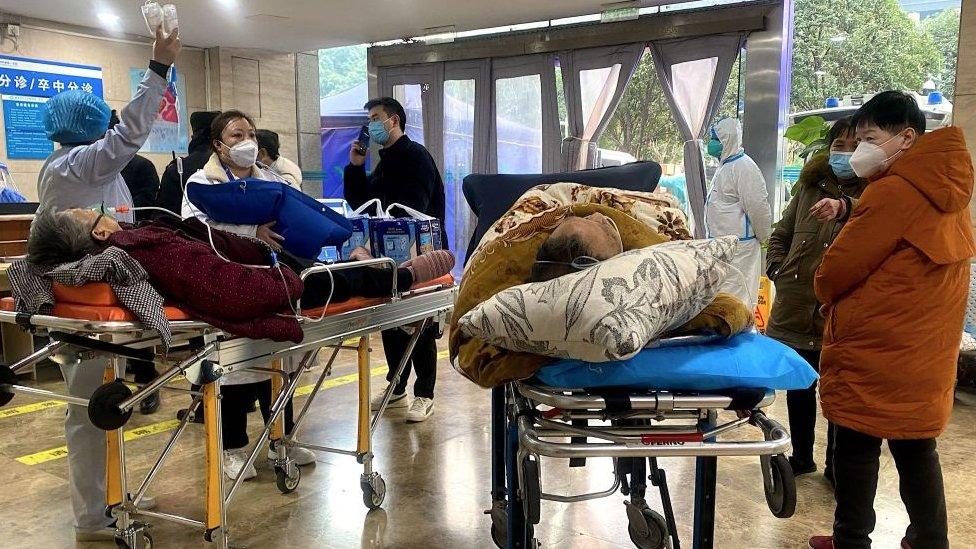
There have been reports that hospitals in China are being overwhelmed
China has experienced a surge in Covid infections and deaths across the country since a strict zero-Covid policy was lifted in December, but official data on the extent of the pandemic has been very limited.
What China says
Between 8 December and 12 January, China says there were 59,938 Covid-related deaths across the country.
This figure, published on 15 January, was the first update to its death toll since lockdown restrictions were lifted last year.
It's a big jump from the 13 deaths recorded in the previous month - in part because deaths from underlying conditions as well as respiratory failure caused by Covid have now been included.
China has also only been recording Covid infections at hospitals and fever clinics for those with recognised symptoms. Asymptomatic cases and positive results from home testing kits are not recorded in the data.
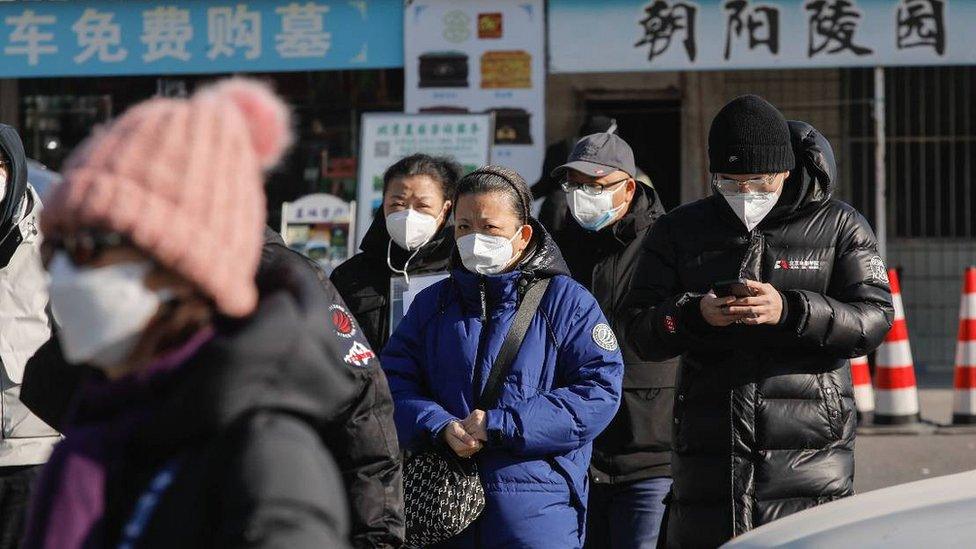
People gathered outside a crematorium in Beijing
How reliable is the data?
The World Health Organization (WHO) has asked for more "rapid, regular and reliable" data on numbers of hospitalisation and deaths.
Beijing says it has been sharing Covid data in "a timely, open and transparent manner in accordance with the law."
Dr Louise Blair, of the UK-based research company Airfinity, says that although the new death toll is higher than earlier, it may still not represent the true number of deaths when you compare China's figures with those from other countries.
"We would expect China to have higher mortality per capita than those countries as they had higher protection from vaccines and in many cases natural immunity than China."
"These numbers imply a much lower number of deaths per capita in China than all other major countries have experienced," she adds.
Health services under pressure
A study by Peking University estimated that as of 11 January, some 64% of the population were reported to be infected with the virus.
Reports in late December suggested hospitals were under growing strain from the number of cases, with long queues for clinics and patients on hospital beds in the middle of busy waiting rooms.
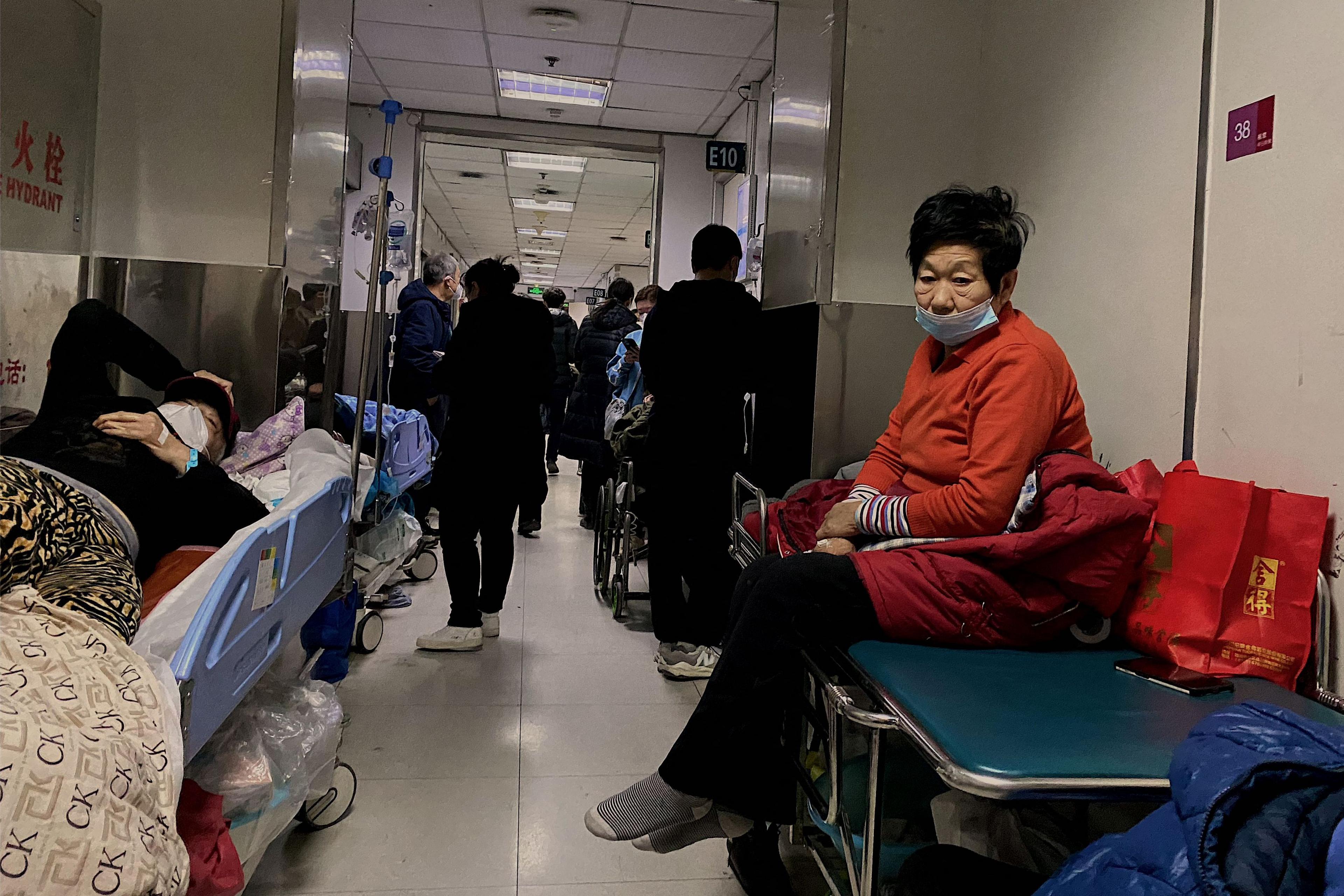
Images appear to show overrun hospitals, like this one in the city of Tianjin on 28 December
Videos emerged on social media throughout December appearing to show crowded hospitals as well as queues at funeral homes.
The BBC's team in Beijing has also reported on long queues outside health clinics and a high demand for fever remedies at pharmacies.
Temporary health centres have been set up along with intensive care facilities across the country.
How has China's Covid policy changed?
There was a sudden lifting of many of China's Covid restrictions following protests against strict lockdowns across the country in November.
Before that, China had one of the toughest anti-Covid regimes in the world - known as its zero-Covid policy.
The measures included strict lockdowns even if only a handful of Covid cases had been found, mass testing in places where cases were reported, and people with Covid having to isolate at home or under quarantine at government facilities.
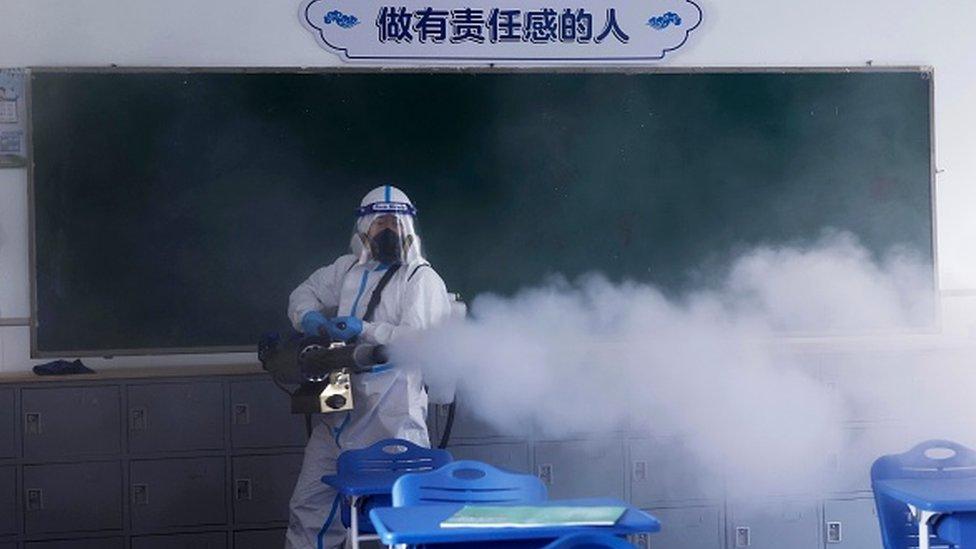
Schools had been closed in Shanghai
Lockdowns have now been scrapped, and quarantine rules have been abolished.
A negative Covid test is no longer required to enter public transport, restaurants, gyms and other public buildings (with the exception of orphanages and care homes).
On 8 January, China fully opened its borders with no travel restrictions or quarantine measures for arrivals.
However, several countries including the US and the UK, have imposed Covid testing on visitors from China due to its Covid surge in a move strongly criticised by China.
China's vaccination policy
Overall, China says more than 90% of the population has been fully vaccinated.
However, around the time its zero-Covid policy was lifted, less than half of people aged 80 and over had received three doses of vaccine.
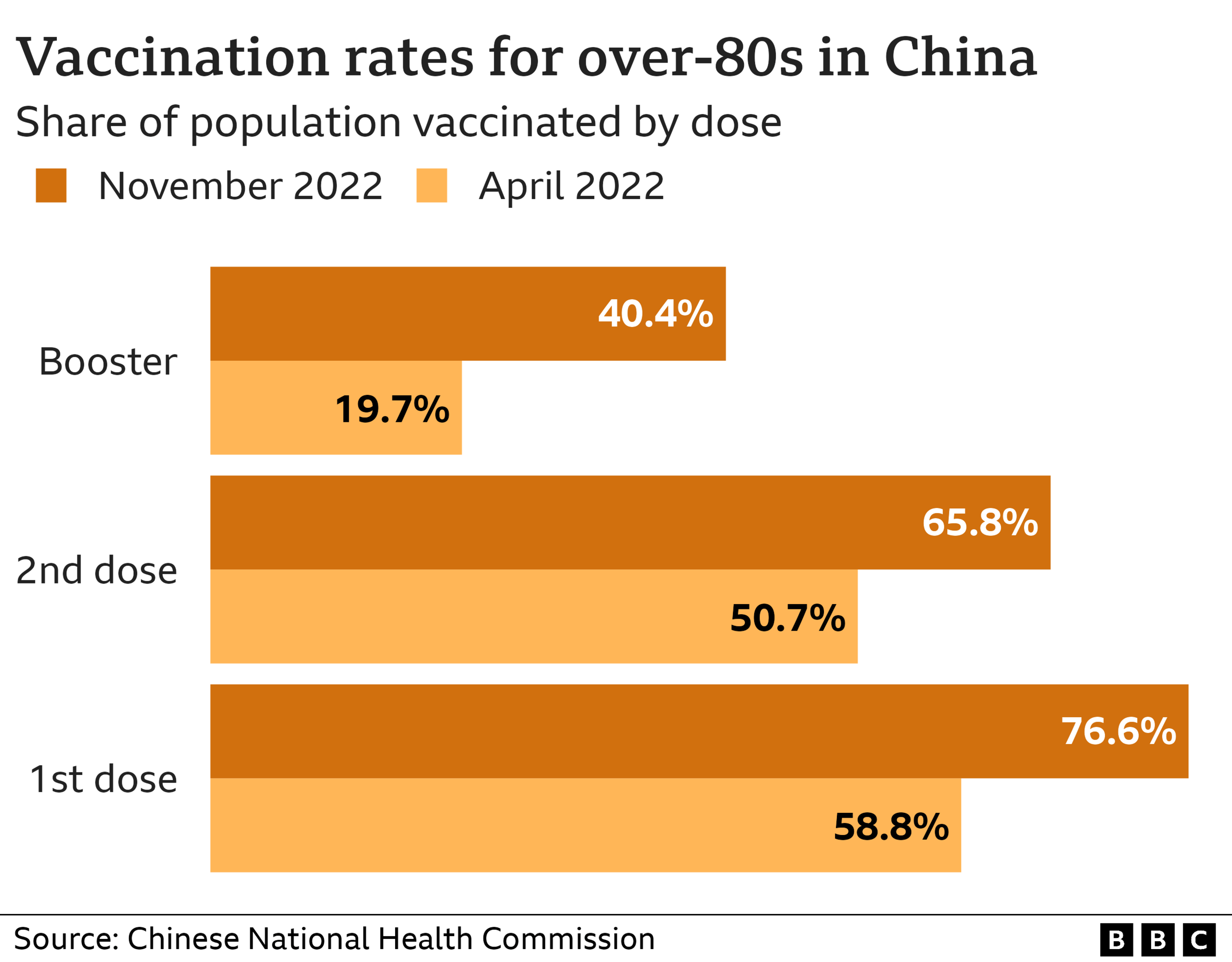
The authorities now say they require local health services to "strengthen immunization of the whole population, particularly the elderly", external.
There are doubts over whether the main vaccines used in China - Sinovac and Sinopharm - are effective against Omicron, the most widespread strain.
China has refused to use Western vaccines widely.
The government has given no official explanation. However, national pride may be a factor according to Dr Yu Jie, Senior Research Fellow on China at the international affairs think tank Chatham House:
"I think it's Xi Jinping really thinking of things in terms of economic self-reliance - that need to have China produce and use its own vaccine, rather than import it from somewhere."
Reporting by Wanyuan Song, Jake Horton and Jeremy Howell.